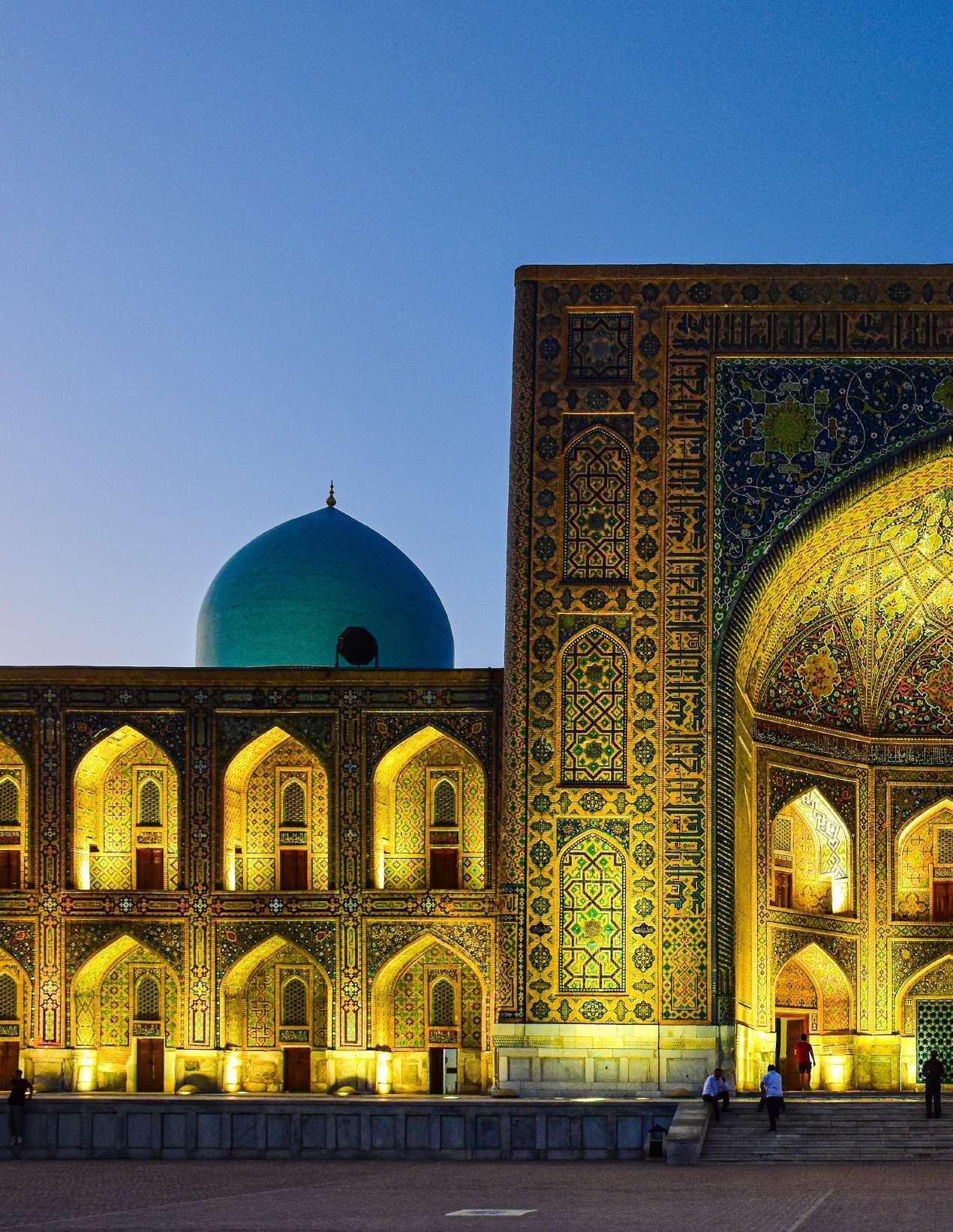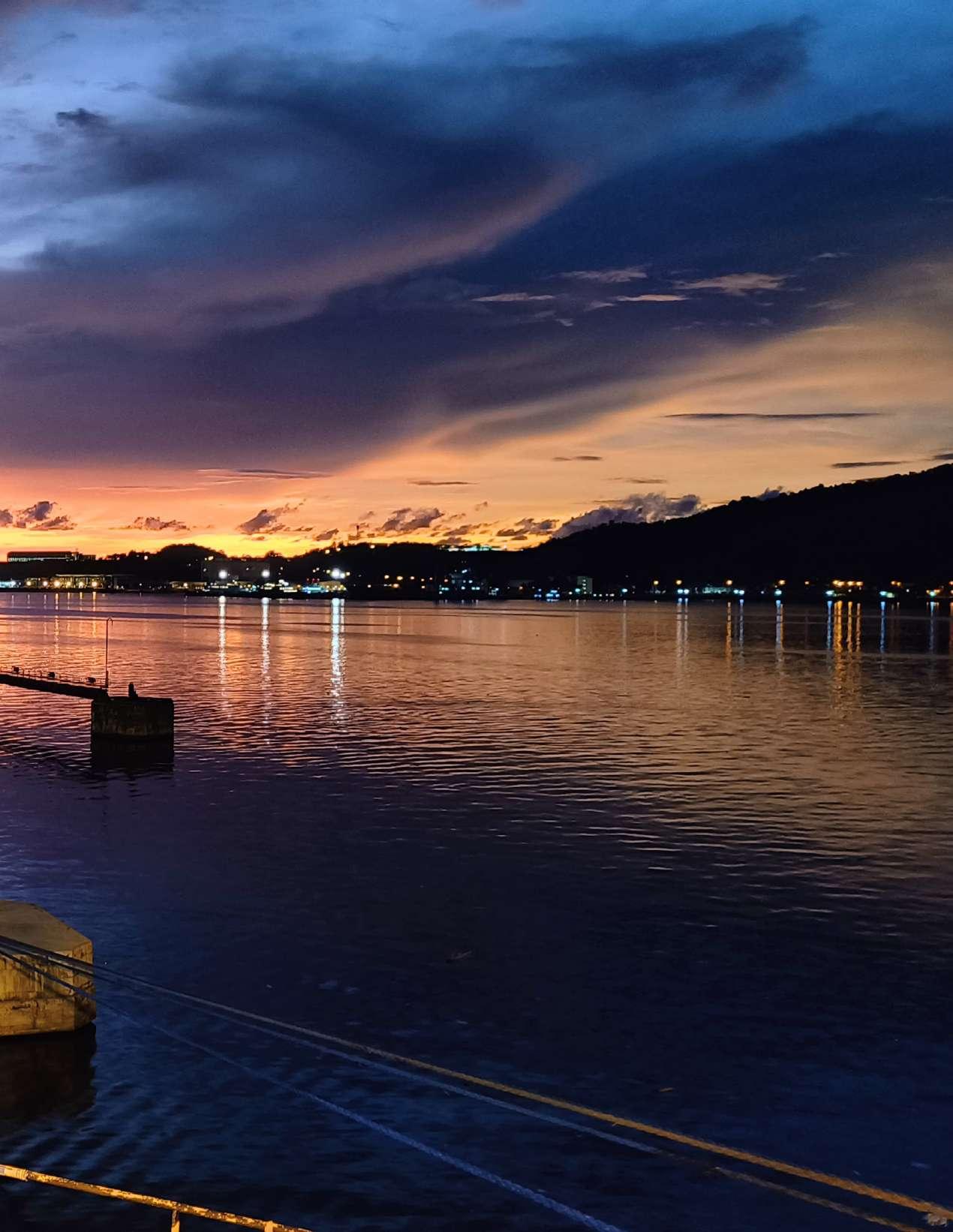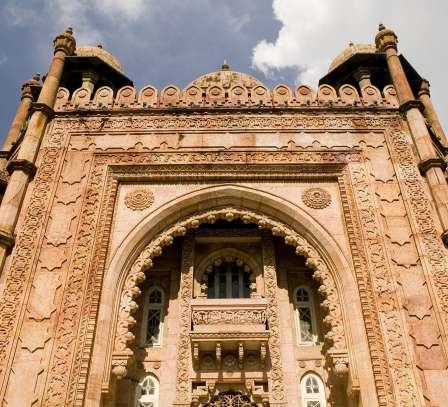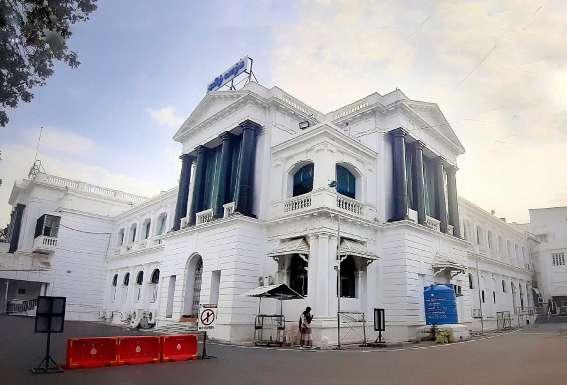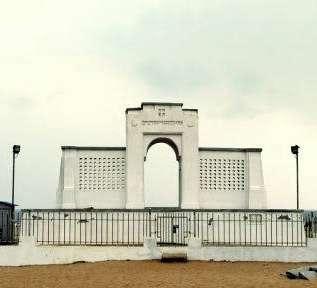INTERNAL TEAM
Sameer Bharat Ram
Bharat Ram
Sameer Bharat Ram Nanditha Vijayaraghavan Sheeba Grace
Sameer Bharat Ram
Lekhashree Natarajan Tharun K
DESIGNER
Dhinesh Babu S
Dhinesh Babu S
Dhinesh Babu S
Elumalai V
Dhinesh Babu S
Dhinesh Babu S
Dhinesh Babu S
Elumalai V
Elumalai V
Elumalai V
Elumalai V
John Paul S
Elumalai V
John Paul S
John
John Paul S
John Paul S
John Paul S
FEATURE / CONTRIBUTING WRITERS
Akshaya G Aishwarya Sridharan FEATURE / CONTRIBUTING WRITERS
Akshaya G Aishwarya Sridharan Yoheswari Devaraj
/ CONTRIBUTING WRITERS
FEATURE / CONTRIBUTING WRITERS
Aishwarya Kanchi Aarathi Arun Veejay Sai Aarti Aney Aasha Sriram Vilani Senthamil DESIGNERS
Shaikh Suhail Ahmed Megha Gowrikrishnan Santhosini Appiah
John Paul S
John Paul S
Nanditha Vijayaraghavan Janani Suri
Nanditha Vijayaraghavan Janani Suri
Nanditha Vijayaraghavan Janani Suri Aishwarya Kanchi
Vidhya Anand Sanjana Ganesh Nanditha Vijayaraghavan
Vidhya Anand Sanjana Ganesh Nanditha Vijayaraghavan
Aarathi Arun Nandita Vijayaraghavan Divya K Purushotham
Purushoth Appu
Aishwarya Kanchi Sadakshi Kalyanaraman
Sadakshi Kalyanraman Karthik Keramalu Akila Sridhar
Sadakshi Kalyanraman Karthik Keramalu Akila Sridhar
Aishwarya Kanchi Aarathi Arun Veejay Sai
Aishwarya Kanchi Sadakshi Kalyanaraman
Sadakshi Kalyanraman Karthik Keramalu Akila Sridhar
Chiranjeevi Penumala
Sadakshi Kalyanraman Karthik Keramalu Akila Sridhar
Aishwarya Kanchi Aarathi Arun Veejay Sai
Aparna P Kochumon Anagha Natraj Pranav Radee Abinaya Subramanian Aishwarya Kanchi
Aarathi Arun
Aarathi Arun
Pavithra
Aarathi Arun
Aarathi Arun
Pavithra Babu
Pavithra Babu
Aarti Aney
Mishra Sahana Subramanya
Padma Murugahappun
Padma Murugahappun
Padma Murugahappun
Aasha Sriram Vilani Senthamil
Akshay Ramesh
Akshay Ramesh
Padma Murugahappun
Aarti Aney Aasha Sriram Vilani Senthamil
Sameer Bharat Ram
Akshaya G Aishwarya Sridharan Yoheswari Devaraj
18
Samarkand - A City of Charm & Culture 06 Celebrating Women’s Resilience
12 The Spectacular Art of Van Gogh comes alive in Chennai
26 A Traverse through the Korean Kraze in India
30
Divulging into the magic of portraiture with L Ramachandran
36 The Life of Seafarers: Sailing Through Adversity
42
Head back in time to experience the ethos of tribal Gond art
54
Madras Locale: Locus on the Focus
Brew’s new spotlight is on art and culture that embarks on the essence of the magazine.
Let’s dive into this theme - “Culture and Living” for an amusing ride and diverse content.
50
Cannelloni: Your Passport to Rome!
International Women’s Day celebrates the achievements and progress of women globally whilst highlighting the ongoing need for gender equality. The theme “Inspire Inclusion” emphasizes the importance of ensuring that women are included and valued in all aspects of society.
This theme acknowledges the challenges that women face in terms of discrimination, bias, and lack of representation, and it aims to inspire action to address these issues and create a more inclusive world where women have equal opportunities and recognition. Celebrating Women’s Day under the theme of “Inspire Inclusion” reaffirms the commitment to promoting gender equality and empowering women to participate fully in social, economic, and political life.
When we inspire others to see the value in women’s inclusion, we make the world a better place for everyone. Imagine a world where everyone feels like they belong, where everyone’s voice is heard, and where everyone has the opportunity to contribute. That’s the kind of world we want to create by inspiring inclusion. When women are included, they feel like they matter. They feel relevant and empowered. They have a sense of belonging and confidence to participate fully in society. This isn’t just good for women—it’s good for everyone. Including women means recognizing their talents, skills, and perspectives. It means giving them equal opportunities in education, employment, and leadership roles. It means challenging stereotypes and biases that hold women back.
This theme acknowledges the challenges that women face in terms of discrimination, bias, and lack of representation, and it aims to inspire action to address these issues and create a more inclusive world where women have equal opportunities and recognition. Celebrating Women’s Day under the theme of “Inspire Inclusion” reaffirms the commitment to promoting gender equality and empowering women to participate fully in social, economic, and political life.
When we inspire others to see the value in women’s inclusion, we make the world a better place for everyone. Imagine a world where everyone feels like they belong, where everyone’s voice is heard, and where everyone has the opportunity to contribute. That’s the kind of world we want to create by inspiring inclusion. When women are included, they feel like they matter. They feel relevant and empowered. They have a sense of belonging and confidence to participate fully in society. This isn’t just good for women—it’s good for everyone. Including women means recognizing their talents, skills, and perspectives. It means giving them equal opportunities in education, employment, and leadership roles. It means challenging stereotypes and biases that hold women back.
In 2024, we are still discussing about gender equality that prompts reflection on where we went astray and where we stand today. The struggle for gender equality didn’t emerge overnight; it stems from deep-rooted societal norms and historical injustices. Throughout history, women have faced systematic discrimination, limited access to education, restricted economic opportunities, and unequal treatment under the law.
The origins of gender inequality can be traced back to ancient civilizations where patriarchal systems established male dominance in various spheres of life. This pattern persisted through centuries, perpetuating stereotypes and biases that relegated women to subordinate roles. The Industrial Revolution further cemented gender roles, confining women to domestic duties while men entered the workforce. Despite significant progress in recent decades, gender inequality persists in various forms.






Women still earn less than men for the same work, face barriers to career advancement, and are underrepresented in leadership positions. Moreover, women continue to bear the brunt of unpaid care work, further exacerbating economic disparities. However, amidst these challenges, the importance of women in society remains undeniable. Women play crucial roles as caregivers, educators, innovators, and leaders. Their contributions to the economy, community development, and cultural enrichment are immense and invaluable. When women are empowered and included, societies prosper, benefiting from their diverse perspectives and talents.
Today, the fight for gender equality is more urgent than ever. Movements such as #MeToo and Time’s Up have shed light on pervasive gender-based violence and harassment, sparking conversations and driving accountability. Governments, organizations, and grassroots initiatives are implementing policies and programs to advance women’s rights and opportunities. As we navigate the complexities of gender inequality in 2024, it’s essential to recognize the significance of women’s roles in society and work towards a future where all individuals, regardless of gender, can thrive equally. By addressing systemic barriers, challenging stereotypes, and promoting inclusivity, we can create a more just and equitable world for generations to come.
Economic empowerment, particularly concerning gender equality, remains a critical issue globally. While strides have been made in recent decades to address disparities, women continue to face significant obstacles in accessing and thriving within economic systems. This essay will explore the impact women have had on economic development and highlight persistent challenges they confront in achieving true equality. Women’s contributions to the economy are undeniable. From managing households to leading multinational corporations, women play vital roles in driving economic growth and sustainability. In many parts of the world, women are essential contributors to agricultural production, small businesses, and the informal sector. Their entrepreneurial spirit and innovation have led to the creation of jobs, the expansion of markets, and the development of new industries.
Furthermore, studies consistently show that investing in women’s economic empowerment yields significant returns. When women have access to education, financial resources, and opportunities for economic participation, communities prosper, poverty rates decline, and economies thrive. Empowering women economically not only benefits
individuals and families but also contributes to broader societal progress. Nonetheless, despite these contributions, women continue to face systemic barriers that limit their economic empowerment. Discriminatory laws and social norms restrict women’s access to land, credit, and other productive resources. Gender pay gaps persist, with women earning less than men for the same work, and women remain underrepresented in leadership positions and decision-making roles within businesses and governments.
Moreover, women are disproportionately affected by economic shocks and crises, such as the COVID-19 pandemic, which has exacerbated existing inequalities. Women are overrepresented in low-wage and informal jobs, making them more vulnerable to job loss, reduced income, and limited access to social protection measures. The burden of unpaid care work, which falls predominantly on women, further impedes their economic advancement, and limits their participation in the formal economy. To address these challenges and promote gender equality in economic empowerment, concerted efforts are needed at all levels of society. This includes enacting and enforcing laws that protect women’s rights, investing in education and skills training for women and girls, expanding access to financial services and resources, promoting women’s leadership and representation in decision-making processes, and challenging harmful gender stereotypes and norms.
In conclusion, achieving equality in economic empowerment is not only a matter of social justice but also essential for sustainable development and inclusive growth. While progress has been made, much work remains to be done to dismantle the systemic barriers that hinder women’s full participation and advancement in the economy. By recognizing and addressing these challenges, we can create a future where all individuals, regardless of gender, have equal opportunities to thrive economically.
As we commemorate International Women’s Day, let us not only celebrate the achievements of women but also reaffirm our commitment to gender equality. Let this day serve as a reminder that the fight for women’s rights is far from over and that each of us has a role to play in creating a more inclusive and equitable world. Together, let us continue to inspire inclusion, challenge stereotypes, and empower women to realize their full potential. For it is only through collective action and unwavering determination that we can build a future where every woman and girl can thrive. Happy International Women’s Day!
Santhosini Appiah
Mirroring emotions with vibrant Colours:
A painting turns into art when the soul of the artist is poured along with the colours into the painting. Only very few such artists became popular for their emoting arts. One such artist was Vincent Van Gogh.
The term “Tortured Artist” could well have found its origins in the profound connection between Van Gogh’s emotional turmoil and the captivating, yet melancholic, beauty woven into the fabric of his art. It took the world some time to recognize the brilliance in his work, which occurred much later than Van Gogh’s period (1853-1890). It is known that Van Gogh suffered from schizophrenia and depression and although his work is the most recognized art of the century, he barely sold one of his paintings when he lived.
Vincent Willem Van Gogh was a Dutch post-impressionist painter whose brilliant brushstrokes revolutionized the world of oil painting. He lived through various careers in his early life as a teacher, an art dealer and a missionary but found his true calling as an artist in his late twenties. He created approximately 2100 artworks in the last decade of his life, which included over 800 oil paintings.
What makes the work of Vincent Van Gogh stand out are his use of striking colours, emphatic brushwork, and contoured forms of his work which have powerfully influenced the current of expressionism in modern art.
His famous works include “The Starry Night”, ”The Sunflowers”,”Bedroom in Arles”, ”Wheatfield with crows” and many more. He was also an excellent self-portrait artist, allowing
us to witness the evolution of his emotions, self-reflection, and the profound introspection that marked his artistic journey.
The Real Van Gogh Immersive Experience, now in Chennai:
Art on a canvas could be joyful enough for an onlooker, but how exciting could it be if the same art is brought to life around us? Such was the excitement happening inside the Van Gogh-themed art café in Express Avenue Mall in Chennai.
Every enthralling brushstroke of the great Van Gogh was projected around the viewers, just a touch away from reality. An immersive art display into the life and works of the most beloved and popular artist, Vincent Van Gogh enamours the viewers to breathe amongst the stars in the painting of the starry night and redefines traditional art viewing experiences.
The immersive display is equipped with 20,000 lumen projectors giving clarity and depth while highlighting Van Gogh’s technique of bright colours and bold brush strokes. The scene takes the form of a narrative from the evolution of the artist, his unique use of techniques in his paintings, and finally resonates with the emotional depth in each of his paintings.
The bright colours and swirls of paint capture the senses of the audience, allowing the visitors to step into the artist’s vibrant and emotionally charged universe while dousing them with a serene sense of joy and enchantment. From the Starry Night to the Sunflowers, every stroke of Van Gogh’s brush comes alive, creating an immersive and unforgettable encounter with one of the greatest artists in history.
A dive into the visual treat:
Walking into the immersive Van Gogh display is nothing short of stepping into a dream-like world. The exhibition space is transformed into an immersive canvas, with Van Gogh’s vibrant brushstrokes covering every inch of the walls.
The use of floor-to-ceiling projections allows visitors to be enveloped in Van Gogh’s art, letting them take a dive into
the paintings as in reality. The immersive experience begins with Van Gogh’s early works, reflecting the influence of his Dutch roots and the sombre tones that characterized his early career.
The dim lighting and melancholic atmosphere set the stage for the evolution that awaits, inviting visitors to appreciate the artist’s progression from darkness to light. The carefully curated visual display is accompanied by a hauntingly beautiful soundtrack,
immersing visitors further into the emotional world of Van Gogh.
The Art Of Arles:
The expo has been curated to tactically navigate through the key phases of Van Gogh’s life history that marked his exceptional artistry. One such standout segment focuses on his time in Arles, where he experienced an outburst of creativity and produced some of his most iconic pieces. The walls are adorned with
replicas of Sunflowers, Bedroom in Arles, and Café Terrace at Night, among others. The vibrant hues and bold brushstrokes come to life, enveloping viewers in the same intensity that fuelled Van Gogh’s creative fervor during this period.
The Night of Stars:
The one piece of art that stood out and put Van Gogh into light would definitely be his “Starry Night” painting. The impressive
colour choices, the swirling night brushstrokes and the yellowish shimmering gaslights would highlight this painting to make it eternal. The immersive expo reaches its zenith with a dedicated space for Van Gogh’s masterpiece, The Starry Night.
Visitors find themselves standing in the midst of swirling galaxies, surrounded by projections that mimic the artist’s distinctive brushwork. The ethereal ambience created by the
immersive visuals, combined with a carefully curated soundtrack, amplifies the emotional impact of this iconic painting. The organizers have ingeniously integrated technology to elevate the audience’s engagement, making them feel like active participants in Van Gogh’s cosmic dreamscape.
This segment invites the onlookers to step into the mind of the artist to experience the turmoil and brilliance that birthed the
masterpiece. Although the piece of art gained in popularity after his death, Van Gogh had mentioned this painting to be a failure in his many letters to his brother. If the most outstanding painting of all time was considered a failure by the artist, one can imagine just how unique his mind was and how much more he was capable of.
An Educational Expo:
The organizers of the immersive expo have added a layer of depth to the exhibition by incorporating augmented reality, enabling visitors to virtually walk alongside the artist along with his paintings. This made both seasoned art connoisseurs and those new to the world of Van Gogh appreciate his evolution and panache in all his artistry. Beyond the visual spectacle, the immersive expo also offers educational insights into Van Gogh’s life, his struggles with mental health, and the artistic movements that influenced him. Informational panels strategically placed throughout the exhibition provide context to each painting, giving visitors a deeper understanding of the artist’s motivations and the historical backdrop against which he worked.
The expo’s commitment to education extends to workshops and guided tours, where art historians and experts share their knowledge about Van Gogh’s
techniques, his contemporaries, and the lasting impact of his work on the art world. This interactive and informative approach ensures that visitors leave not only entertained but also enriched with a newfound appreciation for Van Gogh’s contributions to the world of art.
A Testimony to a New Age of Art Exhibitions:
The immersive Van Gogh display in Chennai has elevated the traditional art exhibition to new heights. Its ability to transport visitors into the world of Van Gogh’s art is truly remarkable. By merging art with technology, this immersive display has not only captured the hearts of art enthusiasts but also opened the door to a broader audience. It has sparked a new era of immersive exhibitions, promising a future where art comes to life right before our eyes.
As attendees exit the expo, they carry with them a profound connection to Van Gogh’s art, having walked through the landscapes that inspired him and felt the emotional intensity that defined his creative process. The immersive expo in Chennai stands as a testament to the enduring power of Van Gogh’s legacy and the limitless possibilities of merging art with technology to create an unforgettable and enlightening experience.
Dine with culture, Feast with elegance
A CITY OF CHARM & CULTURE
Shaikh Suhail Ahmed
Situated in the heart of Uzbekistan, lies a city enriched in history and brimming with cultural richness – Samarkand. Renowned as the crossroads of the ancient Silk Road, Samarkand boasts a legacy that spans millennia, enchanting visitors with its enchanting architecture, vibrant bazaars, and warm hospitality. As one of the oldest continuously inhabited cities in Central Asia, Samarkand’s charm lies not only in its grand monuments but also in its ability to transport travellers through time.
Ruled by Arabs, Turks, Uzbeks, and also by Mongols, one can easily spot an amalgamation of various cultures. Inspired by luminaries like the poet Rumi, who once travelled through these ancient streets, Samarkand invites modern-day adventurers to explore a journey of enlightenment. Let’s uncover the secrets of this gem of the Silk Road which was designated as a UNESCO World Heritage site in 2001. 1 INR is equal to almost 150 uzbekistan som.
Getting There from India:
Travelling to Samarkand from India is easier than ever, with multiple flight options connecting major Indian cities to Tashkent, the capital of Uzbekistan. From Tashkent, travellers can either opt for a scenic train ride or a short domestic flight to reach Samarkand. Alternatively, direct flights to Samarkand’s international airport are also available, offering convenience and efficiency.
Prominent Places to Visit:
1. Registan Square: The heart of Samarkand, Registan Square is a breathtaking ensemble of majestic madrasas adorned with intricate tilework and towering minarets. Witness the splendour of the Ulugh Beg Madrasa, TilyaKori Madrasa, and Sher-Dor Madrasa, which stand as testament to the city’s rich architectural heritage. The exterior of these madrasahs is endowed with majolica, mosaic, marbles, and even gold!
2. Gur-e-Amir Mausoleum: Pay homage to the great conqueror Tamerlane at his splendid mausoleum, adorned with vast domes and ornate mosaics, reflecting the grandeur of Timurid architecture. Constructed in the 14th and 15th century,
The Timurid regime played an essential role in town planning and architecture. The design incorporated here also led to influential achievements of Safavids in Persia, Mughals in India, and the Ottomans in Turkey.
3. Shah-i-Zinda Necropolis: Located at a 30 minute foot journey from Registan Square, lies the “Shah-i-Zinda” Necropolis or The Tomb of The Living King. Sources claim this heritage site to hold in it the grave of a
King who was the cousin of Prophet Muhammad (PBUH). The necropolis shows excellent craftsmanship and tilework of the 14th century. Here legends and history intertwine, as it houses the tombs of nobles, scholars, and saints. Keep your shoulders and knees covered when visiting this heritage site.
4. Bibi-Khanym Mosque: Marvel at the colossal grandeur of one of Central Asia’s largest mosques, built by Bibi-Khanym, the wife of
Tamerlane, to pay respect to the King’s return to one of his trips from India. It was supposed to be the best creation of Samarkand then.
However, the architect fell in love with the Queen and delayed the construction of the mosque. When the time of Tamerlane’s arrival approached, Bibi Khanym implored the architect to complete the construction, but the architect, blinded by love, wanted to kiss the queen in return. The mosque was
Completed and a huge folklore goes behind it. However, that does not take away the charm of this mosque like the other monuments of Samarkand.
Particulars on commute:
Navigating Samarkand is convenient, with an efficient network of buses and taxis connecting key attractions. Buses have routes and the payment is to be done to the conductors. The conductors shout the stops so the
Passengers do not get confused. Yandex Taxi is yet another option. Shared taxis also exist, carrying 5 to 7 passengers at a time. For a truly authentic experience, consider exploring the city on foot.
Food regime (Vegetarian and Non-Vegetarian):
Indulge your palate with a diverse array of culinary delights, ranging from hearty pilafs and succulent kebabs to fragrant plov (pulao),which is the national dish
of Samarkand with each corner offering its version, and savoury samsas. Vegetarian options abound, with fresh salads, stuffed grape leaves, and delicious vegetable stews showcasing the bounty of local produce.
For non-vegetarian fare, sample the mouth-watering flavours of grilled meats at Ikrom Shashlik and aromatic rice dishes, accompanied by traditional flatbreads and flavorful sauces. Explore Siab Bazaar which is next
to Bibi Khanym mosque and experience the heritage of dried fruits, a specialty of Samarkand.
Accommodate yourself:
From luxurious hotels to cozy guest houses, Samarkand offers accommodation options to suit every preference and budget. Experience the epitome of hospitality at boutique hotels within historic neighbourhoods, or unwind amidst modern comforts at internationally renowned chains.
The rates start from 2000 INR per night and in hotels such as Continental Samarkand it goes upto 6000 per night. Hostels like the Heartland Hostel also offers affordable stay for solo travellers.
Cultural encounters:
Allow yourself to experience the charming tapestry of Samarkand’s cultural scene, where music, dance, and craftsmanship flourish. Attend a mesmerising performance of traditional Uzbek music and dance, or witness skilled artisans at work, creating intricate ceramics and vibrant textiles.
Ideal Time to Visit and Length of Stay:
The best time to visit Samarkand is during the spring and autumn months, when the weather is mild and comfortable. In Spring, which lasts from March to May, there are blooming gardens and pleasant temperatures ideal for sightseeing. Autumn, from September to November, offers crisp days and clear skies, perfect for experiencing Samarkand’s rich cultural heritage. You should plan to spend at least three to four days in Samarkand to fully experience its history and culture, allowing ample time to explore its iconic landmarks, savour its culinary delights, and engage with its welcoming people.
As the sun sets over the domes and minarets of Samarkand, one cannot help but be captivated by the timeless allure of this ancient city. From its breathtaking monuments to its vibrant bazaars and warm hospitality, Samarkand urges travellers to embark on a journey of discovery and enchantment. Whether wandering through its historic streets or charmed by its culinary delights, a visit to Samarkand is sure to leave a permanent mark on the soul, inviting travellers to return time and time again.
Recent years have seen an extensive culinary revolution brewing in India, and its source is as surprising as it is savoury – Korean cuisine. From bustling cities to quaint towns, the influence of Korean food has captured the taste buds and hearts of young adults and adults alike. Let us begin our flavorful journey to uncover the reasons behind this newfound love affair and explore the fascinating fusion of Korean and South Indian culinary cultures.
Korean cuisine, famous for its bold flavours and vibrant colours, has found a special place in the hearts of food enthusiasts across the globe. However, its journey to India is a tale of cultural exchange and culinary experimentation. Thanks to globalisation and the widespread popularity of Korean pop culture, particularly K-dramas and K-pop, Indians have been introduced to the exotic flavours of kimchi, bulgogi, and bibimbap to name a few. One of the primary reasons for the surge
in Korean food’s popularity in India is its flavour profile, which resonates well with the Indian palate. Korean dishes often feature a fusion of sweet, savoury, spicy, and tangy flavours – a mixture of tastes that mirrors the dynamic nature of Indian cuisine.
The umami-rich sauces, fiery chilli pastes, and fragrant spices characteristic of Korean cooking are similar to the bold flavours found in Indian dishes, making it a popular and worthy transition for culinary enthusiasts. Moreover, the healthconscious trend sweeping across India post lockdown has also contributed to the rise of Korean food import. In 2020, there was a 162% rise in the import of Korean food. Korean cuisine focuses on fresh ingredients, minimal oil, and balanced nutrition, aligning perfectly with the growing demand for wholesome and nutritious meals among the population. Dishes like bibimbap, a medley of rice, vegetables, and protein, offer a
wholesome and fulfilling dining experience that appeals to health-conscious individuals seeking flavourful alternatives to traditional food.
The expansion of Korean restaurants and food trucks in Indian cities has fueled the craze for Korean cuisine. From trendy urban neighbourhoods to bustling food markets, eateries specialising in Korean delicacies have turned into hotspots for food enthusiasts looking to indulge in the latest culinary trends. The vibrant ambiance, friendly service, and Instagram-worthy presentations make dining at Korean establishments an experience to remember, charming the diners and allowing them to explore the offerings of Korean cuisine.
However, the influence of Korean food goes beyond culinary indulgence – it has become a cultural phenomenon that fosters cross-cultural understanding and appreciation. Through food, South Indians are able to connect with Korean
culture on a deeper level, gaining insights into its rich culinary heritage and culinary traditions. Cooking classes, food festivals, and cultural exchanges centred around Korean cuisine provide opportunities for cultural immersion and exchange, fostering friendships and mutual respect between Indians and South Koreans.
Furthermore, the rise of social media has played an important role in popularising Korean food among young adults in India. Platforms like Instagram and YouTube are flooded with mouthwatering images and videos of Korean dishes and mukbangs, they attract viewers with their vibrant colours and flavours. Influencers and food bloggers share their culinary adventures and recipes, to inspire their followers and help them recreate Korean dishes in their own kitchens. The accessibility of online resources has motivated Indians to explore and experiment with Korean cooking techniques (such as the infamous Dalgona Coffee).
Shaikh Suhail Ahmed
Interestingly, the fusion of Korean and Indian culinary cultures has given rise to innovative dishes that celebrate the best of both worlds. Chefs and home cooks alike are putting their own spin on classic Korean recipes, incorporating local ingredients and flavours to create masterpieces that delight the senses. From kimchi dosa to bulgogi biryani, these inventive dishes showcase the creative synergy between Korean and South Indian culinary traditions, offering a glimpse into the future of food fusion.
The influence of Korean food on the Indian population and their food habits is a testament to the power of culinary diversity and cultural exchange. Through a shared love for bold flavours, fresh ingredients, and culinary creativity, Koreans and Indians have forged a delicious bond that transcends borders and cultures. As the Korean cuisine craze continues to sweep across India, one thing is certain – the fusion of Korean and Indian flavours is here to stay, serving taste buds and inspiring culinary adventures for years to come. So, let’s raise our chopsticks and dosa spatulas in celebration of this flavorful fusion – a true feast for the senses and the soul!
| Wool & Rabbit | ALICE FOR HER
Shamshad
“In my craft, I don’t just click photographs, I create them. Each image is a product of careful ideation, concepts born from the depths of my imagination. Before I even lift my camera, I immerse myself in ideating. I conceive a vision that will breathe life into my photograph. It’s not merely about capturing what’s in front of me; it’s about recreating my subject or concept, infusing it with my unique perspective and interpretation. As I visualize my picture, I dive deep into a conversation between my inner soul and the subject. It’s in this exchange that the true magic happens”
What or who inspired you to become a photographer?
In the beginning, I ran an advertising agency where the photographers I hired fell short of my expectations. Frustrated by this, I took matters into my own hands and began capturing photographs independently, without formal training or guidance.
Jarmo Pohjaniemi has been my guiding light, mentoring and inspiring me along the path that has led me to where I am today. Also, I draw inspiration from a diverse array of photographers, including Ansel Adams, Diane Arbus, Annie Leibovitz, Steve McCurry, Cindy Sherman, and Vivian Maier.
Lekhashree Natarajan
What’s your expertise in photography?
In my craft, I don’t just click photographs, I create them. Each image is a product of careful ideation, concepts born from the depths of my imagination. Before I even lift my camera, I immerse myself in ideating. I conceive a vision that will breathe life into my photograph. It’s not merely about capturing what’s in front of me; it’s about recreating my subject or concept, infusing it with my unique perspective and interpretation. As I visualize my picture, I dive deep into a conversation between my inner soul and the subject. It’s in this exchange that the true magic happens.
I spend countless hours researching the intricacies of my subject, exploring every angle, every possibility. Because only through thorough research can I truly understand, appreciate, and capture the essence of what lies before me. And it’s through this commitment and focus that I transform mere clicks into timeless works of art.
How did you feel about being a part of one of the world’s highest selling magazines, ‘PLAYBOY’?
Playboy, with its profound impact on humanity, holds a unique position in both digital and print formats. Many international photographers still harbour dreams of collaborating with Playboy, aspiring to see their pictorial works in its publication. My photographs have been featured in Playboy editions spanning more than 12 countries. As the first Playboy Photographer from India, I’ve broken barriers and carved out a distinctive path for myself. While Playboy may be commonly associated with nudity and eroticism, I perceive its pages as canvases for the expression of fine artistry. Through my lens, I’ve transformed mere images into captivating representations of human form and emotion.
Coming from a humble village in Tamil Nadu, Playboy has not only been a magazine but also a transformative force in my life. It has reshaped my cultural outlook where it brought out changes in my language, sensibility, and worldview. More than mere happiness, my association with Playboy has given me a deeper understanding of the world and its complexities.
What’s your favourite kind of photography?
Personally, I have an appreciation for all types of photography. Over the course of my career, I have delved into various fields, including Fashion, Fine Art (Nude & Glamour), Portrait, Celebrity, Landscape, Sports, Temple/Architecture, A.I (Artificial Intelligence). However, my true strengths lie in Temple Architecture, Fine Art Nudity, and Nature
Photography. These areas resonate with me deeply, guiding me through my creative journey and bringing me a sense of fulfilment. In these particular genres, I find my passion and purpose intertwined. They fuel my creativity and drive, propelling me forward in both my personal and professional endeavours.
I am proud to say that I have found success in each of these categories, both commercially and artistically. This success stems from my unwavering belief in the fusion of passion and profession, driving me to continuously push the boundaries of my craft.
From starting your career as an assistant photographer to being a renowned photographer today, how has your journey been?
I began my journey as an assistant, and even today, I carry that spirit of assistance within me. I think to myself that I am still assisting my associates. Despite my professional achievements, I remain grounded, recognizing that I am still in the process of learning and growing. I firmly believe that every day presents an opportunity to acquire new knowledge and skills. This everlasting search for learning has made my journey exciting, making each step along the way more fulfilling.
Tell us about the calendar shoot with Vijay Sethupathi that went viral. What made you choose him for the shoot?
I’ve had the privilege of photographing numerous celebrities, from International stars to Bollywood and Kollywood icons. Yet, personally, I found a special connection with Vijay Sethupathi, seeing him as a relatable figure. As a photographer, it’s not just my joy but also my camera’s delight to capture Vijay Sethupathi. More than me, my camera feels a sense of contentment clicking his face, translating his unique charm into timeless photographs.
Our collaboration extended to six projects, including three calendar shoots, which brought us both commercial successes. However, what truly warmed my heart was witnessing the overwhelming happiness of Vijay Sethupathi’s fans.
Their excitement and appreciation for our work surpassed anything I could have imagined. Even today, whenever I announce my presence in a particular location in Tamil Nadu, Vijay Sethupathi’s fans make it a point to visit me, expressing their love and admiration. This outpouring of affection fills me with joy and gratitude. It’s a reception I doubt many other celebrity photographers experience, and for that, I feel truly blessed.
Your journey has been a ride of diverse contents. Nude art photography being one of them, what would you like to comment on that? How do you see it?
I appreciate the way you’ve worded the question, as I find myself predominantly associated with nude art photography, overshadowing my proficiency in other fields.
To answer your question, Nude photography is often considered taboo and deemed obscene by many. Nude photography, for me, is a journey of self-exploration and cultural dialogue. Through this art form, we delve into the depths of human expression, challenging societal norms and embracing the beauty of the human body in all its forms. Every model should feel empowered and confident, posing for photographs with admiration for themselves. During nude shoots, I adhere to certain principles. Them being, Artistic expression, Consent and respect, Privacy and sensibility, Cultural and social context and Artistic intent.
What is photography to you in one line?
Photography is saving time in a bottle (Thank you Jim Croce). Photography is a magic spell to freeze time.
How has travelling the world made you a vivid photographer? What are the challenges you have faced?
“Energy is neither created nor destroyed, It transforms from one form to another”
Similarly, I transformed my Time into talent through sheer focus. Even while traveling internationally, I shun traditional sightseeing in favour of immersing myself in photography-related pursuits nearby. I trade my time to acquire knowledge.
My content selection influences my evolution as a photographer. Throughout my journey, I’ve encountered numerous challenges. Creative competition with fellow photographers stands out as a significant hurdle. Additionally, surpassing my previous work poses a formidable challenge that continually drives me to improve.
Being a renowned photographer, you have a huge team supporting you. What would you like to say about them?
No one exists in isolation in this world; we all depend on each other for our existence. As a photographer, but more importantly as a human being, I owe my success entirely to my team and family. While many may have come and gone due to their own struggles, I have never turned anyone away from me. Each and every individual who has crossed my path has extended their hand and helped me climb the ladder to reach the position I am in today.
I must emphasize that my team and I are on this journey together. I am deeply grateful to the Almighty for blessing me with such a dedicated team and a supportive family. In particular, my dear wife, Sunitha, has been my pillar of strength throughout my journey. Her support has been invaluable, and I am truly fortunate to have her by my side.
The gallery exhibition, called ‘Medley of Art’ by L. Ramachandran got an overwhelming response from the audience. What would you like to say about that?
“Medley of Art” is the culmination of a 10-year creative journey, featuring 200 frames that encompass various aspects of photography. Each picture tells its own story, with the majority of them having garnered numerous awards and achieved significant sales in galleries worldwide. The book incorporates the theory of color psychology, which is evident throughout all the photographs. Esteemed personalities such as actor Vijay Setupathi, ace cinematographer Ravi Varman and the legendary Thotta Tharani have praised the book.
During an exhibition in Seoul, South Korea, “Medley of Art” was read by over 25,000 people, highlighting its widespread appeal. The greatest compliment for the book came from my mentor, Jarmo Pohjaniemi, who started voicing out about the book to the world. I created the book out of pure passion and a desire to produce a photo book of international standards. The overwhelmingly positive response to the book brings me immense pleasure and joy.It is the feedback from the audience that fuels an artist’s journey.
Seafarers, the unsung heroes of the maritime world, navigate the vast expanse of the ocean, ensuring the smooth flow of goods and commodities across continents. Beyond the glimmering horizon lies a world of challenges and sacrifices, where these dedicated individuals brave the elements to keep global trade afloat.
A Glimpse into the Life of Seafarers
Seafarers are the backbone of the maritime industry, entrusted with a myriad of roles and responsibilities vital to the operation of ships and vessels at sea. From navigation and cargo handling to safety protocols and emergency response, their expertise and dedication keep the wheels of global commerce turning.
Life as a seafarer is fraught with challenges, both physical and emotional. The isolation of the open ocean, coupled with long periods away from home, can take a toll on their mental well-being. The relentless demands of the job, combined with harsh working conditions and the everpresent risks to health and safety, require unwavering resilience and determination.
Among the unique experiences seafarers encounter is the crossing of the equator, a maritime tradition steeped in symbolism and camaraderie. This milestone is marked
by elaborate ceremonies and rituals, symbolizing the transition from one hemisphere to another. Despite the lighthearted festivities, the equator crossing serves as a reminder of the challenges and uncertainties that lie ahead. It represents every seafarer’s ‘Right of Passage.’
Life at the Sea
As the sun rises over the horizon, a new day dawns on the ocean, where seafarers embark on their daily journey aboard ships and vessels. For these dedicated individuals, each day brings with it a unique blend of challenges, responsibilities, and moments of comradery amidst the endless sea.
The day typically begins with seafarers taking their positions for watchkeeping duties. Stationed on the bridge or in designated lookout points, they maintain a vigilant watch over the ship, navigating through waterways, monitoring systems, and keeping a lookout for hazards
or other vessels. Working in rotating shifts, they ensure continuous surveillance of the ship, day and night, in all weather conditions.
Off-duty hours are devoted to routine maintenance tasks, as seafarers engage in inspecting, repairing, and maintaining the vessel’s systems and equipment. From checking engine rooms to lubricating machinery and cleaning communal areas, they uphold the ship’s operational efficiency and safety standards.
If the vessel is engaged in transporting cargo, seafarers participate in cargo operations, overseeing the loading, stowing, and securing of cargo on board. Following strict protocols and safety procedures, they ensure that the cargo is handled safely and efficiently, minimizing the risk of damage or loss during transit.
Throughout the day, seafarers also engage in administrative tasks, such as maintaining logs and records, documenting cargo operations, and communicating with port authorities and other vessels via radio or satellite communications. These tasks require attention to detail and effective communication skills to ensure smooth coordination and compliance with regulations.
Amidst their duties, seafarers find moments of respite and relaxation. Meals prepared by onboard cooks provide nourishment during designated meal times, while leisure time offers opportunities for recreation, socializing with fellow crew members, or simply enjoying quiet moments alone.
For vessels operating 24/7, seafarers working night shifts continue to carry out their duties, maintaining vigilance and ensuring the safe operation of the ship during nighttime hours. The rhythm of life at sea continues unabated, with seafarers embracing the challenges and rewards
of their chosen profession with unwavering dedication and determination.
In the ever-changing landscape of the ocean, seafarers navigate through the currents of uncertainty, bound by a shared sense of purpose and fellowship. Each day at sea is a testament to their resilience, as they steer the course of global trade and economy, bridging continents and connecting cultures across the boundless expanse of the sea. They account to over 90 percent of global trade and transportation.
Behind the facade of strength and stoicism lies the personal lives of seafarers, often marked by sacrifice and solitude. The bonds of family and relationships are tested as they spend months at sea, yearning for the warmth of a familiar embrace. Yet, amidst the loneliness, they find solace in the companionship of their fellow crew members, forging friendships that transcend the boundaries of nationality and culture.
Despite the hardships they face, seafarers approach each day with unwavering determination and resolve. Their commitment to duty, coupled with their passion for the sea, fuels their perseverance in the face of adversity. Through their resilience and dedication, they embody the spirit of resilience that defines the maritime industry.
As we sail through the tumultuous waters of life, let us not forget the silent heroes who navigate the high seas with courage and conviction. Seafarers, with their unwavering determination and selflessness, exemplify the resilience of the human spirit. Their sacrifices ensure that the global economy remains afloat, connecting nations and cultures across the oceans. Let us salute these modern-day mariners, whose indomitable spirit keeps the world sailing forward, one voyage at a time.
Ancient Chronicles of the Gond:
These aboriginal tribes led a simple, nomadic lifestyle with temporary seasonal settlements. They used tools such as bows and arrows for hunting, and grinders and hammers to process plant food like roots and tubers.
In the 14th century, this large tribal group was split by the Mughal invasion, leading them to relocate to the Vindhya and Satpura regions, known today as Chhattisgarh, Maharashtra, Andhra Pradesh, and Orissa. Despite this, they remain one of the largest tribes in Central India, numbering about 13 million people at present according to recent studies.
Traditional Gond art comprised dance, songs, and wall paintings. The term ‘Gond’ originated from the word ‘Kond’ which translated into ‘Green Mountain’. Their style of art is inspired by natural elements, like forests, rivers, mountains, skies, and animals, and cultural depictions like mythological stories and characters, mainly of Goddess Shakthi and Lord Ganesha. During their brief stays in places like caves and rock formations, tribe members passed on cultural knowledge through song and dance in the form of stories and also documented their surroundings and lifestyle.
This was done through etchings in the form of engravings, carvings, and paintings on
boulders, caves, and rock shelters. Whether for communication, record-keeping, or pastime, it was from these practices that the unique Gond art form of the Gond tribes was born. The tribe celebrated festivals such as Diwali or Nag Panchami and many other significant occasions, the members of the tribe celebrated with great pomp and created an ambient atmosphere by getting together, decorating their homes, streets, and pathways with colorful paintings comprising varied patterns exclusive to the Gond style.
The patterns and strokes used are exclusive to their tribe, however, little is known about the significance of each pattern. Some patterns used
are dots, lines, fish scales, curved lines, water droplets, seeds, and geometric shapes. There is enough evidence about how the tribe revered the cosmic entities, nature, and wildlife and most importantly, their immense belief system in the religious aspects. What’s interesting is the Gond people’s choice of materials for painting. Every ingredient sourced to prepare the paints and brushes is natural.
They show utmost care to select and work mainly with vibrant colors such as crimson red, navy blue, forest green, turmeric yellow, magenta, rosy pink, and bright orange are some of the commonly used colors, ultimately bringing the elements of
the paintings to life! Even more fascinating is their unmatched quality and precision maintaining the painting’s luster over time. Let’s now look into what are the various natural products used to derive these colors. The crimson red is extracted from the local clay soil which is heated to a certain temperature, resulting in desired red.
It is then ground into a fine powder For turmeric yellow, yes, you guessed it right, turmeric is dried completely, and ground into fine powder. For pink, it is dried bougainvillea flowers; for magenta, it is beetroot powder; for green, the leaves of different plants based on the shades are used, and for black, it is charcoal. The characters in the painting mainly consist of animals and birds such as Deer, Fish, Peacock, Lion, Tiger, Bison, Cows (considered sacred according to their Hindu culture), Porcupine, Snakes, Tortoise, etc. The inclusion of trees with spiritual importance amongst the tribe.
The stories attached to these trees are depicted in many paintings by famous artists. They believe that the lives of humans and trees are interconnected and that one cannot exist without the other.
One such painting is of the Mahua tree titled “Tree of Life”. Famous artists have depicted this concept as it is a well-known fact that the Mahua Tree plays a very significant role in every Gondi. The Mahua fruits and flowers are a great source of vital nutrients. The fruits can be eaten raw or cooked. The pulp from the fruits and flowers is also a source of sugar used in various dishes. The flowers are used to produce an alcoholic drink which is usually consumed on festive occasions. The seeds are used as biofuel.
As mentioned earlier, storytelling was an integral part of the entertainment aspect among the tribes. Storytelling through the form of paintings sounds challenging, however, it came naturally for them to depict them on a single image or through a series of scenes. Below are a few short stories narrated as paintings that have gained popularity over time.
Story depiction of the Mahua Tree:
Here is another interesting story of a Brahman girl (Upper caste in those days) and a Chamar boy (lower caste in those days) who fell in love with each other. However, this relationship was not entertained by their community. As any love-smitten couple would do in Bollywood movies, they eloped into a forest and lived there forever. As legend says, the boy was reborn as Ganja and the girl as the Mahua tree. Hence, it is said that Ganja and Mahua are forbidden to be consumed together, as they can never be together according to that community of Aboriginals.
Story depiction of Deity Pashupati:
The Aboriginals of the Gond tribe worshiped Lord Shiva as their deity, in this famous story, Pashupati once drank Somras made out of Mahua flower. With the first few sips, he was intoxicated and started babbling like a Parakeet, he furthermore downed a few sips and roared like a tiger. Again, he gulps a few more sips of the fermented drink, his feet aren’t standing on the ground and starts rolling on the ground like a boar. This has been beautifully depicted below, a painting made by renowned Gond artist Sri. Rajendra Raju Shyam.
Sri Bhajju Shyam:
Nephew to the renowned Sri Jangarh Singh Shyam, Sri Bajju Shyam took inspiration from his mother and uncle and pursued a career in Gond art. He has received global recognition, a few among which are, the famous award winning book called The Night Life of Trees and London Jungle Book.
A few noted Gond artists:
Sri Jangarh Singh Shyam:
He was one of the first in the community to become a pioneer in Gond art and the reason for the worldwide recognition of Gond art form. Originally hailing from the Pardhan Gond community of Madhya Pradesh, the artist was considered a cultural ambassador not only in tribal art but also was an excellent flutist. From stepping into the national forum by getting a chance to work at Bharat Bhavan, Bhopal, a prestigious museum for Indian tribal, traditional, and contemporary art, in 1988, to receiving a global platform at two of the most reputed exhibitions, where he participated in the Jyotindra Jain’s Other Masters exhibition at the Crafts Museum, New Delhi in 1998, and Magiciens de la terre exhibition, conducted at Paris in 1989. Through these laurels, out of his humbleness, his dream was fulfilled when he started the Jangarh Kalam or Jangarh Singh Shyam presenting the Pardhan Gond art which instilled a creative energy that was harnessed by individual power and talent for the art.


Smt. Durgabai Vyam:
Smt. Durgabai Vyam is the sister-in-law of Jangarh Singh Shyam and also a very renowned Gond Artist. Currently living in Bhopal, she started painting at six years of age and apprenticed under Jangarh Singh Shyam. The main pattern used in her style of painting is paddy seed. She also co-authored the children’s book, The Nightlife of Trees alongside Sri Bhajju Shyam, which won the Bologna Ragazzi Award in 2008.
A Correlation between the Gond Aboriginals and the British:
Many have wondered about the fact that the British have nothing to do with the Gond tribe. However, let me introduce you to Mr. Verrier Elwin, a British anthropologist, sent to India as a Christian Missionary in 1927. He was dumbstruck by the superior thinking of the yet so simple community of our tribal folks in India and decided to work in favor of them under the guidance of the then Prime Minister, Mr. Jawaharlal Nehru.
After a few years of service, he went on to marry a woman from the Gond community, going against their family’s efforts to talk him out of it. Later, he went on to bear a son and also married another tribal woman. Throughout his stay in India, he went on to come up with a book comprising of a varied collection of fables he came across from different communities, from different parts of the Indian tribal region, titled, “When the World Was Young”. Like this gentleman, there are many patrons like Sri Jagdish Swaminathan, who took the greats like Sri Jangarh Singh Shyam and trained them to be skilled artists, because of whom the community has benefited significantly. However, it is not always a rosy picture, as there are many challenges that the art
form faces. Time and modernity have made it difficult for the people of Gond to look for additional sources of income, or rather, a high-yielding income, which is driving them to look for alternatives as laborers or become farmers.
Measures to conserve Gond art:
Environmental factors also play a major role in the dwindling art form, as the natural raw materials are hard to source freely as in the past. The authenticity is lost while implementing the usage of chemical paints as there are a few shades that natural colors produce, which are hard to replicate with chemical ones.
To preserve and document the Gond Tribal art, the Government of India is making tremendous efforts by launching various schemes under numerous cultural institutions to promote and encourage young people of the tribe and others to pursue this form of art as a livelihood, such that the art is preserved and passed on to the generations to come. It is these cultural implications that are the sole eloquences of our tribal voice. At present, Gond art occupies an important place among art lovers. Though there have been many global recognitions, we can hope that there is more such cultural acceptance throughout.
Craving a comforting escape beyond the old pasta and lasagna? Cannelloni offers a flavorful journey with rich flavors and storied history, from its ancient Roman beginnings as ‘lagani’ to today’s tubular delights.
Cannelloni is more than just a meal; it’s a tradition, a celebration shared between loved ones, serving as a witness to Italian traditions. Cannelloni
are characterized by their tubular shape and are typically filled with spinach and ricotta cheese. However, its versatility allows for endless variations, from savory beef and cheese fillings to creative combinations tailored to individual tastes. This adaptability has contributed to cannelloni’s popularity worldwide, with each culture adding its own unique twist to the classic recipe. Cannelloni is often served as a
main course, together with a salad or garlic bread. But hold on to your forks, because cannelloni isn’t limited by borders—it’s enjoyed around the world with its own unique twists. In America, it’s called manicotti—a slightly larger, thicker version with ridges.
Before we get into the kitchen, let’s gather our ingredients - the essential tools for crafting this flavorful dish.
Ingredients for sauce
• 2 tablespoons of olive oil
• 1 finely chopped onion
• 4 minced garlic cloves
• 1 fresh bay leaf
• 1/2 teaspoon each of dried thyme and oregano
• 1/3 cup of tomato paste
• 800 grams (28 oz) of canned crushed tomatoes
• 4 cups of vegetable broth
• 1/3 cup of Chardonnay or dry white wine
• 3/4 teaspoon of salt
• 1 1/2 teaspoons of sugar
• 1/3 teaspoon of black pepper
• 2/3 cup of roughly torn basil leaves
Ingredients for the Filling
• 250 grams (8 oz) of thawed frozen chopped spinach
• 500 grams (1 lb) of full-fat ricotta cheese
• 1/3 cup of finely shredded Parmesan cheese
• 1 cup of shredded cheese (Mozzarella, Cheddar, etc.)
• 1 egg
• 1 minced large garlic clove
• A sprinkle of grated fresh nutmeg or nutmeg powder
• 3/4 teaspoon of kosher salt
• 1/2 teaspoon of black pepper
Ingredients for the Cannelloni
• 18–22 dried cannelloni tubes
• 1/3 cup of shredded Parmesan cheese
• 1 1/4 cups of shredded Mozzarella cheese
• Additional basil and Parmesan for garnish (optional)
Now that we are ready with our ingredients, it’s time to get into the kitchen.
Let’s begin the show with the filling:
For the ricotta and spinach filling, begin by wilting the spinach gently. Combine it with creamy ricotta, Parmesan cheese, a beaten egg, and your preferred seasonings. Consider this mixture as your blank slate; add a bit of nutmeg for warmth and some herbs for freshness to suit your taste.
Now, the moment of truth—assembling the cannelloni: Using a piping bag or a spoon, gently fill each tube with your chosen filling. Don’t overstuff. Alternatively, if you’re feeling patient, you can spoon the filling into the tubes with a knife – although it may take a bit longer!
Next, the sauce simmers:
1. Sauté Aromatics: Put pot over medium-high heat, add oil. Toss in the garlic, onion, bay leaf, thyme, and oregano, and cook until the onion is perfectly translucent, which usually takes 3-4 minutes. Then, add some tomato paste and let it cook for another minute, when it releases a tempting aroma.
2. Wine Infusion: Time to add a touch of sophistication! Pour in the wine and crank up the heat. Let it bubble away vigorously until it evaporates, infusing the sauce with layers of delightful flavor. This step is where the magic truly begins.
3. Simmer Magic: Now, it’s all about building those robust flavors. Add tomatoes, a hint of sugar, salt, and pepper. Stir gently, then reduce the heat to a simmer and let it cook for 20 minutes, allowing its depth and richness to develop.
4. Blitz to Smoothness: Once the sauce has reached to desired consistency, remove the bay leaf and grab your trusty stick blender. Give it a
whirl until it transforms into a velvety-smooth sauce. Let it simmer for an extra minute, further enhancing its luxurious texture.
5. Basil Finale: Ah, the crowning touch! Stir in fresh basil leaves, adding a burst of herbaceous freshness. Cover the sauce to keep it warm.
Finally, the grand finale—baking and serving:
1. Preheat the oven to 180°C/350°F.
2. Pan: Select a baking pan that comfortably accommodates around 20 cannelloni.
3. Smear: Begin by spreading a generous cup of sauce evenly across the base of your chosen pan. This simple step prevents the cannelloni from slipping and sliding during baking.
4. Assemble: Carefully arrange your filled cannelloni in the prepared baking dish, ensuring they snugly fit. Pour the remaining sauce generously over the top, making sure every tube gets a loving coating.
5. Bake it: Cover the dish with foil and bake for 30 minutes.
6. Cheese it!: Take out the pan, remove the foil, sprinkle generous amounts of parmesan and mozzarella on top, and bake for an additional 15 minutes until the cheese is golden and melted.
7. Serve and enjoy: Once out of the oven, garnish with additional parmesan and basil, if desired. Gather your loved ones, appreciate the effort you put into cooking, and enjoy the delicious, melting flavors of your homemade cannelloni.
Accompaniments: Have your yummazing meal with a refreshing green salad, crusty bread, or roasted veggies. These additives improve the overall dining experience by adding depth and flavor to your dish. Remember, it’s cannelloni. Enjoy every bite!
LOCUS ON THE FOCUS
Madras was born on August 22, 1639, when the British first arrived in the area. Madras is short for Madrasapattinam. Both the Cooum and the Adyar rivers flowed to the ocean. The fishermen left for the ocean and came back to the land for habitat. The city, however, did not flourish until the British arrived. This is an effort to use English alphabets to express the legacy of Madras later known as Chennai, long after its freedom.
Binny Mill Company Limited
A Chennai-based manufacturing firm with a two-century pedigree, The Binny Mill Company was a conglomerate involved in shipping, import commerce, weaving, banking, insurance, and the construction of highways for the industrial sector. The Binny Group lost a lot of money during 1906 Arbuthnot financial crisis. In 1926, there was a significant strike that followed this. It was considered a part of the fight for independence in India. Kollywood, the Tamil film industry, continues to use the buildings for filming fighting scenes and songs, despite the fact that production ceased in 1996.
Amir Mahal
In honour of Amir Mahal, the Nawab of Arcot and his family lived in the magnificent Amir Mahal Approximately 14 acres were set aside in 1798 for the construction of the palace, which was designed in the Indo-Saracenic architectural style to house the administrative offices of the British East India Company. British India took control of the region that Ghulam Muhammad Ghose Khan, the 13th Nawab of Arcot (1825–1855), had previously ruled because there was no legitimate successor. Muhammad Abdul Ali, the present Nawab of Arcot, and his three brothers and their families live at the Amir Mahal after the British authorities seized their former house,Chepauk Palace, in 1876. The Amir Mahal palace in Chennai represents the opulence of the royal family.
Chennai Kesava Perumal Temple
In 1646, the site that is now the Chennai High Court was chosen for the construction of Chennai Kesava Perumal Temple. In 1752, the temple was demolished, and the courthouse was built by the British East India Company to further their business interests in the region. Because of this dissatisfaction, in 1762, the Kesava Perumal temple and the Chennai Malliswar Shiva temple were jointly constructed there. Pattanam Kovil and Chennapatnam are said to have been named after these two religious institutions.
The most well-known four-faced freestanding clock tower is the Doveton Clock Tower, located at the crossroads of Jeremiah Road, Purasawalkam High Road, Ritherdon Road, and Perambur Barracks Road. In the early 1900s, the British rulers of India constructed this clock tower in a prominent location in Purasawalkam. The colonial commanders at Fort St. George would routinely fire their cannons every day at 8:00 p.m. before the tower was built. This tower clock mechanism dates back a century and serves as a notable landmark in Purasawalkam.
Fort St.George
On April 23, 1637, English officers Francis Day and Andrew Cogan from the East India Company finished the construction of the first British fort, the Fort of St.George. After this, British control strengthened. What had been a sleepy fishing community quickly expanded into a major metropolis. This fort continues to serve as Tamil Nadu’s administrative center.
Esplanade
In order to consolidate their control over Chennai, the British constructed Fort George. However, they had the fort for a long time until the French army took it. The fort came to the British on the basis of a peace treaty that was subsequently arranged between the two parties. The area surrounding the fort was restricted for construction so that the fort’s security would not be compromised. Thirteen stupas have been placed there as boundary markers. The esplanade is the name given to the gap between buildings. Only one of the original stupas still stands below the Dare House, dated January 1, 1773.
Government Museum
The Government Museum was established in 1851 on a sprawling 16.25-acre plot in Chennai’s Egmore neighbourhood. The Madras Literary Society first petitioned the British government to establish a museum in the city. After receiving permission, the original museum opened at Fort St. George, but it was later moved to its current location on Pantheon road due to lack of space. A public library was also established there in 1853.
Doveton Clock Tower
Higginbothams
Abel Joshua Higginbothams, an English librarian, founded the company in 1844 under the name of Higginbothams. In the 1860s, Abel Joshua shifted the sale to the current huge edifice. After his demise, the business was maintained by his son, CH. Higginbotham which then changed hands many times before being purchased by the Amal Communications Group in 1945, along with the acquisition of Associated Publishers. It’s worth noting that they’re also the brains behind a corporation with the same name. In 1929, 400 people were actively employed in the company. Until the 1990s, it housed more books than any other shop in India. In 1989, after years of neglect, the building’s exterior was repaired. This bookstore has become an icon of bookselling and an identifier of Anna Road itself.
Frederick Tudor, who also founded the Tudor Ice Company of America, erected the Ice House structure in 1842. This structure served as a storage facility for ice blocks supplied by the “Tudor Ice” Company and delivered to cater to the demands of foreigners in Chennai. That is how the name “Ice House” came about. After ice production had begun in India, the Tudor Ice Company sold the structure to Philigiri Iyengar. Philigiri Iyengar hosted the homeless and illiterate in this building as a form of charity. After giving his famous talk in Chicago, Swami Vivekananda returned home and remained here from February 6th to the 15th, 1897. In his honor, the structure is now known as Vivekananda House. There are books, photos, and audio recordings of Vivekananda’s speeches available for checkout. The term “ice house” is often used to describe this location.
Karl Schmidt Memorial
Developed for the 1925 influx of Burmese refugees into India, it was eventually converted into a dorm for Jamalia Arab College. In 1962, it opened as the country’s first school, catering to the economically disadvantaged. There are now more than 600 students enrolled here. The Perambur complex was designated a “heritage building” in 2010.
Located at Elliots Beach, Chennai. In 1930, a European sailor named Karl Schmidt jumped ashore and swam to safety after seeing an English lady fall overboard. This memorial stands as a testament to his extraordinary heroism and selflessness. The government has made an effort to restore and maintain this memorial structure, which had fallen into ruins.
Ice House
Historic Structure of Jamalia
The iconic structure in the heart of Chennai is the LIC building. The Life Insurance Corporation of India has its main office in this city in southern India. This structure was formerly the highest in all of Tamil Nadu. The building rises 177 feet in the air and has 14 stories. During World War II, a helicopter was once stationed on the roof for protection.
Madras High Court
The British authorities set up courts in India several centuries before the country gained its freedom. One of these three new courts is the Madras High Court. J.W. Brassington created plans for its construction in the Indo-Saracenic architectural style. Annie Irwin served as the director, and it was completed in 1892. The structure was damaged when the German warship launched an assault on it on September 22, 1914, marking the beginning of World War One.
It’s a bridge in Chennai, India, that spans the gap between Fort St. George and Marina Beach. It is built on the Coouam River. With its construction in 1869 by Governor Francis Napier, Napier Bridge is one of the older ones in Chennai. The reconstruction of Napier Bridge began in 1999. The name “Iron Bridge” was given to it at first. This bridge is magnificent in grandeur, stretching 149 meters across six arches. Many people see this bridge as a symbol of Chennai itself.
Omandurar Government Estate
The British renamed this area “Banking Hall,” although the locals still refer to it as “Omanturar’s Royal Garden.” Together with the State House, Governor Edward Clive erected it in 1800. John Cole Dingham planned and executed the structure in the form of a Greek temple. The convocation of Madras University happened here between the years 1857 and 1879. Now it is referred to as Rajaji Hall.
Napier North Bridge
Puratchi Thalaivar Dr MGR Central Railway Station
Royapuram was the location of Chennai’s first train station. Englishman Henry Irwin designed and built Chennai Central Railway Station, the second and largest in the city, in Parktown.The Southern Railway of India is in charge of this station, from which trains go across the country. The name of the station was changed in 2019 to honor a revolutionary leader, Dr. M.G. Ramachandran. It is the most recognizable structure in all of Chennai, and it also happens to be one of the city’s oldest buildings.
During the colonial era, British India constructed 50 statues of Queen Victoria in honor of her proclamation as Empress of India in 1877. At the University of Madras, on the south side near the Senate House on Wallaja Road, to celebrate the Golden Jubilee of the Queen’s Accession on June 20, 1887. The Governor of Connemara, Baron “Castle St. George,” unveiled the statue.
The Ripon Building
Ribbon Palace is a prime example of the British-initiated Indo-Saracenic architectural style that flourished in India. Lord Minto, then Viceroy of British India, laid the foundation stone of this palace on December 11, 1909. The renowned architect, GTS Harris, was responsible for building this historic home. The cost of the day was 7.5 lakh. Lord Ripon, Governor General of British India and a heralded “Father of Local Self-Government,” inspired the mansion’s name when it opened in 1913. The 8.2-foot-tall bell tower on this house has a mechanical hourglass that is a replica of the one in the Palace of Westminster in Britain.
Charles Durant and J. W. Spencer created Spencer Plaza in 1863. Located on what is now Mount Road (or Anna Road), it was constructed in Madras Province. The first department store in the Indian subcontinent opened in this building in 1895, making it the oldest shopping mall in India. People loved it since they could get everything they needed in one convenient location. Following a devastating fire in 1983, elegant Indo-Saracenic buildings underwent a complete reconstruction. It is one of the key destinations where people living in Chennai flock for enjoyment. In addition, India’s Largest and Best Commercial Complexes recognized it as the eleventh-largest mall in the nation in March 2010.
Queen Victoria of Madras
Spencer Plaza
Thousand Lights Mosque
Located on Anna Road, this is a Shia mosque with a dome. This mosque is among the biggest in India. It was Nawab of Arcot, Umdad ul-Umara, in 1810 who commissioned the construction of the Thousand Lights Mosque. Its architecture is reminiscent of that of the Middle Ages. On a particular day, it was customary to illuminate the assembly hall with a thousand oil lights. The mosque was given the name “Thousand Lights Mosque” to continue that custom.
Victoria Public Hall
University of Madras
Seventy thousand people signed a petition to Lord John Elphinston on November 11, 1839, requesting the establishment of Madras University. Later, in 1851, the University of Chennai was established. Started in the Madras Presidency; it was established on the model of London’s University on September 5, 1857, and came under the jurisdiction of the Indian Legislative Assembly. There was everything from medical and engineering to law and the arts. Since then, the fields of medicine, law, and engineering have each had their own specialized school. This is one of India’s oldest universities.
In Chennai, Victoria Public Hall is one of the historical buildings. The edifice was constructed to honor Queen Victoria on the occasion of her Golden Jubilee. Featuring a Travancore roof and an Italianate tower, the Victoria Public Hall is a three-story forum built of red Chinese pottery stone. It is one of the greatest examples of architecture created in Chennai. It was a playhouse up until the turn of the twentieth century. The first film screening in Chennai took place here. The Victoria Public Hall was Chennai’s first theatre, and it’s still standing and looking beautiful.
War Memorial
The Victory War Memorial, also known as the Cupid’s Bow, is an obelisk memorial in Chennai, India, erected in honor of the people of the Madras Presidency who lost their lives in both World Wars (World War I, 1914–1918) and World War II, 939–1945). Inscriptions from later conflicts, such as the 1948 Kashmir Aggression, the 1962 War with China, and the 1965 IndoPakistan War, were added.
YMCA
The Y. M. C. A. College of Physical Education was the continent’s first institution of its kind. In 1920, American citizen Harry Grove Buck of Pennsylvania formed it in the British colony of Madras Presidency. The institution was initially situated in George Town, a major commercial place in Chennai, and then extended to a 64.5-acre location in the Nandanam region. This school of higher learning is still
St. Xavier Church
Prior to 1843, Catholics living on Broadway had to go to the nearby St. Mary’s Co-Cathedral in order to attend religious services. In 1850, the 67” x 36” chapel of the current St. Anne’s convent was constructed. The current St. Francis Xavier’s Church was built and dedicated on December 3, 1866, with Fr. D. Doyle serving as the first parish pastor. The diocesan clergy oversaw the parish from 1878 to 1929. Fr. Ignatius Muthu SDB, in 1929, assumed control as the first Salesian and the church continues to be in Salesian care to date. From 1952 until 1963, when he retired, Fr. Orfeo Mantovani SDB oversaw the church building on both the exterior and inside.
Zoo
There were many onlookers in 1854 when the first zoo in Chennai opened in the Pantheon (Museum) complex with a leopard and a tiger, located in the heart of the Madras Zoological Gardens since 1855. The lack of available land prevented the zoo’s expansion in 1975. The Animal Show Road has to be relocated outside the city because of space limitations and increasing noise pollution from traffic congestion. Therefore, in 1976, the Tamil Nadu Forest Department granted 1265 acres of land in the Vandalur Reserve Forest on the outskirts of the city to create the current zoo, which is the biggest zoo in the Indian subcontinent, to house the animals in the zoo.























































